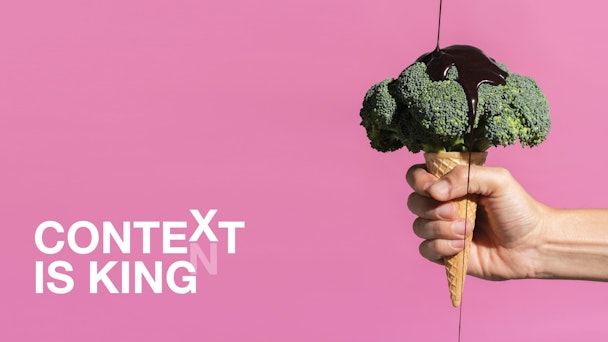Context is the king of digital advertising’s future
Content is still important, but context is the new king. Where your ads appear matters just as much as their content – and news sites provide a bigger bang for your buck than social platforms.

What surrounds your ads on the page, as well as the moment in which they are presented, is just as important as their content
The Academy of St Martin in the Fields’s musical director, soloist and former child prodigy Joshua Bell – one of the top talents in the classical world – took his musical abilities to a Washington Metro station.
Almost no one stopped to listen to him play his violin, let alone recognized his superior talent. In fact, out of 1,097 people who passed Bell by, only 27 gave any money, and only seven stopped to listen for any length of time. Why? Bell’s musical genius was placed out of context, in an unexpected place, where visitors weren’t expecting to have their ears tickled by soothing melodies among the clashing of train cars.
This idea of context doesn’t just apply to in-person scenarios: it is even more relevant in the world of digital advertising.
Context is the new king of advertising – what surrounds your ads on the page, as well as the moment in which they are presented, is just as important as their content.
Take social media as an example: in social environments, ads can be placed beside user generated content (UGC) that brands can’t control, they can be skipped when they’re presented before a video that someone really wants to see, or at worst, they’re placed in an entirely irrelevant environment to be promptly ignored.
Despite the popularity of social media platforms with marketers ($84bn dollars was spent on social media advertising in 2019), a 2020 study by Kantar found that just 17% of consumers say they trust ads on social media.
The issue of brand safety is especially poignant in the midst of a global pandemic: research by the Trustworthy Accountability Group found that more than 85% of consumers say they would reduce or stop purchasing products from brands they regularly use if they saw their ad run next to a Covid-19 conspiracy theory or misinformation.
A more brand-safe alternative to the likes of social media is placing ads in the context of premium publisher sites. Ads placed on news sites are housed in a trustworthy environment, and allow advertisers to control their ads’ surroundings. In fact, in a recent study by the IAB, 84% of news consumers said that they maintained or increased trust for brands that advertised on their preferred news sources.
But context is not only critical for determining an ad’s impact. On much of the web, advertisers have heavily relied on third-party data sources to help them reach the right audience – that’s going to get harder moving forward.
In 2021 and beyond, we’re seeing big strides toward protecting user privacy – including the elimination of third-party cookies. This territory comes with limiting the amount of personal data that can be accessed by advertisers.
Contextual targeting on news sites will be part of the answer. Through contextual targeting, brands can choose the news they want to be next to, as well as the publications they want to be associated with.
As we navigate the near future of digital advertising and consumer engagement, context should be top of mind when thinking about where, when and how your ads can reach the right audience and make the greatest impact.
Content by The Drum Network member:

Taboola
Taboola powers recommendations for the open web, helping people discover things they may like.
The company’s platform, powered by artificial intelligence,...

